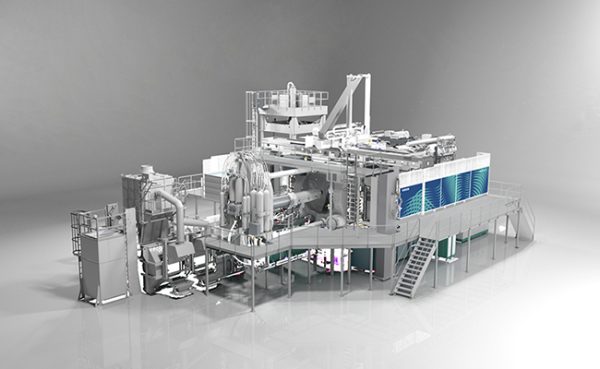4 Tips for Attracting Young People to Manufacturing

By Artem Kroupenev, VP of Strategy, Augury.
No one needs to tell you that there’s a significant labor shortage in manufacturing. You need only look to your open positions to find proof of that. With the Great Resignation, job openings in manufacturing are at record highs: 800,000 each month.
Although great efforts are being made to bring manufacturing back to the U.S. and recruit the next generation of talent, manufacturing labor shortages are quite the hurdle to surmount. All is not lost, however. One study found that perceptions are changing around manufacturing, largely due to the industry’s response to the pandemic. But more work needs to be done to attract and retain top talent.
Money is often a good start, as are time-off benefits and greater schedule flexibilities, but companies need to think more about rewriting the cultural narrative of what manufacturing is to better reflect its current state. Technology in manufacturing has been reshaping the industry, but our recruiting tactics don’t reflect that. We show how working for a manufacturer is an attractive proposition for talent with the skills and background to succeed in the industry.
With such a labor shortage, it may be tempting to focus on training and recruiting the next generation of people to work in the manufacturing industry. But that’s not enough. We can’t just wait for a whole generation to grow up and enter the workforce. Instead, turn your attention toward getting the right systems in place to make the proposition of job opportunities more appealing to talent of all ages. The following are often the best places to start.
1. Create higher value with manufacturing positions.
The promise of going into the manufacturing industry is to be part of reinventing how we relate to our means of production. Sell potential hires the excitement of fundamentally rethinking how we approach engineering. This is a tremendous opportunity, but many manufacturers fall short of marketing this, focusing much of their attention on merely implementing manufacturing technology to digitize processes.
You must enable avenues for innovation, if not rethink the approach to engineering overall. How do you transform a physical system? How do you empower both potential and existing team members to innovate?
Take Tesla, for example. Instead of the engineering group handing off the designs to the manufacturing group, the two are in constant collaboration during the manufacturing process – something almost unheard of in the automotive industry that is changing the approach to automobile manufacturing.
2. Increase diversity through company culture.
For top talent, the appeal of an opportunity can be summed up in a single word: diversity – diversity in backgrounds, capabilities, opinions, and so on. And while 84% of manufacturing executives feel they’ve created equitable and inclusive environments, they also understand more work needs to be done.
Whether it’s the design team or manufacturing line, recruitment efforts should focus on attracting talent from all walks of life, backgrounds, and fields. This means also fostering a company culture that celebrates diverse talent. Getting someone in the door means nothing if you haven’t crafted an environment conducive to their success. Without diversity, it will be near impossible to keep pace with innovation and fill your ranks with people who can not only do the job but go above and beyond.
3. Change the perception of manufacturing.
It’s no secret that manufacturing jobs are miscategorized as repetitive, underpaid, and lacking in upward mobility. As you know, nothing could be further from the truth. The impact of technology in the manufacturing industry has made it quite an exciting field, but talent is left unaware unless you get the word out. This is a huge loss when speaking with Gen Z prospects, as these digital natives expect to use tech in innovative ways on the job.
Start early with your campaign, detailing what it’s like to work in the manufacturing industry. Hit high school, college, and university campuses. Craft a narrative around various positions. If you want to overcome the labor shortage in manufacturing, the solution can often be found in the way you tell your story.
4. Institute reskilling efforts.
Reskilling offers existing employees the opportunity to grow their capabilities. It can often fill skill gaps by reshuffling team members to where you need them most. Then, when the need passes, they can return to their original roles with new capabilities. Or, if they’ve enjoyed their foray, it could mean opening up new growth paths within your company.
But reskilling shouldn’t be seen as just a formalized education on something new – though, admittedly, this also is important. It’s an opportunity to develop the whole company. Reskilling efforts should also introduce talent of different backgrounds, encourage the cross-pollination of teams, and promote knowledge transfer from those of different fields.
This goes back to changing perceptions around the manufacturing industry: 58% of people feel jobs in the manufacturing industry have limited career prospects. That said, 80% might consider a job opportunity with enhanced training and clear career paths. As technology takes over the more tedious work, people in the industry will have more time to devote to higher-level thinking and push innovation to new levels. So weave this into your recruitment narratives. The breakthroughs of today are what the future industry will be built upon. Invite job seekers to be a part of it.
Artem Kroupenev is VP of Strategy at Augury, where he oversees product, market, innovation, and ecosystem strategy. For more information, visit www.augury.com/.







